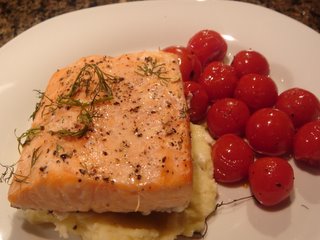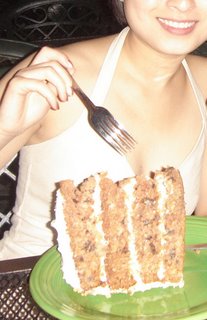 In 36 hours, we’ll be on a plane heading to
In 36 hours, we’ll be on a plane heading to Since I thought it’d be unwise to try two new dishes on a week night, I spent a few minutes looking through my collection of tried and true online recipes before stepping out from work. Roast salmon with dill stood out immediately. I had made the salmon for one of the first dinners J and I had at our loft. It was one of the best salmon dishes that ever came out of my kitchen. The recipe called for a lemon and is even scaled for 2, which means no leftovers. It couldn’t have been more perfect for the last supper.
The entire meal took less than an hour to pull together and that even included the time it took to drive to whole foods to procure the salmon. J absolutely loved it and commented on the salmon’s tenderness quite a few times, which is truly rare since he is not at all one to pay close attention to the food. I will definitely make this again, maybe for company. Only a scoop of the mashed potatoes remained at the end of the meal and I am sure that will be gone before J leaves for work tomorrow.
Roast Salmon with Dill – Modified from a David Lieberman recipe
Serves 2
2 (6-7 ounce) salmon fillets, about 1 ½ inches thick
Handful of fresh dill sprigs
1 lemon
Salt and pepper
Preheat oven to 350°F.
Lay the salmon skin side down in a baking dish and make sure to leave a bit of room between the fillets. Season the salmon with salt and pepper. I used coarse sea salt for a bit of crunchiness as not all the granules dissolve during the roasting. Cover the fillets with the dill sprigs and squeeze the lemon over the whole thing.
Roast for about 15-20 minutes until the thickest part of the salmon is just cooked through.

